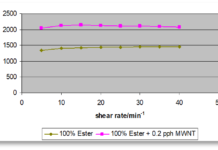Chemical Data Reporting Deadline – September 30, 2024
TSCA’s Chemical Data Reporting Deadline is rapidly approaching. The Toxic Substances Control Act (TSCA) stipulates that manufacturers and importers must submit chemical information to the US Environmental Protection Agency in accordance with Chemical Data Reporting (CDR) requirements, which occurs every four years. The submission must be completed online via the e-CDRweb tool, which is found within the Central Data Exchange (CDX).
Reporting is triggered if the annual production volume at a manufacturing (including importing) site is met during any of the calendar years since the last principal reporting year. For the 2024 submission period, the need to report is based on the production volume for the calendar years 2020-2023. The principal reporting year is calendar year 2023. Manufacturers (including importers) must provide manufacturing, processing and use information for only 2023 and production volume information for 2020, 2021, 2022 and 2023. If a company manufactured or imported 25,000 lb or more of a chemical substance for commercial purposes during any of those years (or >2,500 lb for chemical substances subject to rules, orders or actions), then the company is subject to reporting, unless a qualifying exemption is met. Additional information regarding persons subject to reporting can be found at https://www.law.cornell.edu/cfr/text/40/711.8#b.
RadTech Met with the Office of Information and Regulatory Affairs (OIRA)
In July 2024, several members from RadTech met via teleconference with OIRA to provide comments and highlight RadTech’s opposition to changes proposed by the EPA to the New Chemicals program. Under Executive Order 12866, OIRA meets on regulatory actions with any interested party to discuss issues on a rule under review.
In the proposed rule, the EPA suggested amendments to the New Chemicals Program that could significantly impact the energy-curable industry and its ability to innovate and commercialize new chemicals under TSCA. The main message conveyed by RadTech is that the proposed amendments are not going to help the EPA meet statutory deadlines for the review of new chemicals under TSCA (currently 90 days, with the option to extend for 90 days). Most premanufacture notification submissions are taking 12 to 18 months to get through the EPA review, and it is taking another three or more years for the final Significant New Use Rules (SNURs) to be published on regulated chemicals (>80% of new chemical submissions are being regulated).
The other proposed amendment RadTech opposed is EPA prohibiting PFAS chemicals and substances flagged as Persistent, Bioaccumulative and Toxic (PBT) to be considered under the Low Volume Exemption (LVE) or Low Release/Low Exposure Exemption (LoREX). EPA stated the only way these substances can be adequately controlled/regulated is via the pre-manufacture notice (PMN) process since a consent order can be issued, but the TSCA regulation stipulates that both of these exemptions can ONLY be used in the manner described in the exemption application and that exposures/releases cannot be exceeded as described. Given the controls are inherently in place with these exemptions, RadTech opposes the EPA broadly prohibiting certain classes of chemicals from being submitted via this mechanism, as it does provide a somewhat faster timeline, which is necessary, especially for new chemistries that often are introduced in very controlled and specific applications.
The final message RadTech tried to convey is that the energy-curable industry is supporting a diverse array of applications/uses, including highly specialized markets such as defense, aerospace and electronics. The technology is critical for the US and globally to support energy reduction and other sustainability drivers. The industry currently is being stifled in the US given it cannot get new chemicals approved in a timely manner, and the only way EPA can start to meet its statutory deadlines is to improve its internal processes.
News from the West Coast
SCAQMD Imposes Additional Fees but UV/EB/LED Offers Hope
The South Coast Air Management Air Quality Management District recently adopted a new rule that imposes additional fees on stationary sources in the already over-regulated businesses in the South Coast. Under Section 185 of the Clean Air Act, businesses located in areas that are classified as “severe” or “extreme” that do not attain the National Ambient Air Quality Standards (NAAQS) for ozone by their assigned attainment date have to pay fees based upon a prescribed formula each year until the NAAQS is attained. SCAQMD Rule 317.1 – Clean Air Act Nonattainment Fees for 8-Hour Ozone Standards – was the vehicle used to implement the fees.
The rule requires that facilities located in the South Coast Air Basin or Coachella Valley that emit, or have the potential to emit, 10 tons or more of VOC and/or NOx, to either reduce their emissions by 20% from a specified emissions baseline or pay a fee every year until such time as the Environmental Protection Agency (EPA) determines that the area has met federal ozone standards. Thus, facilities that can convert their processes to UV/EB/LED and achieve emission reductions of 20% or more potentially can avoid paying such fees. Approximately 320 facilities are estimated to be impacted by rule 317.1. The district estimates the annual compliance cost of the rule to be $25.07 million.
pCBtF and tBAc to be Phased Out for Automotive Coatings in Southern California
Proposed changes to South Coast Air Quality Management District Rule 1151, Motor Vehicle and Mobile Equipment Non-Assembly Line Coating Operations, seek to outlaw usage of para-Chlorobenzotriflouride (pCBtF) and tertiary-Butyl Acetate (tBAc), among other things. The rule would impact any person who supplies, sells, offers for sale, markets, manufactures, blends, packages, repackages, possesses or distributes products in the South Coast Basin, even when the product is manufactured outside California. SCAQMD originally proposed setting limits based on European regulations but, based on pushback from the business community, now is focusing on national limits. The agency stated that the main goal is to phase out pCBtF and tertiary-Butyl Acetate tBAc. Staff has acknowledged that the shift may mean allowing higher VOC levels in some product categories, but stated that they are prioritizing reductions of toxic air contaminants over VOCs.
The rule proposes additional reporting requirements for manufacturers of automotive coatings via “Quantity Emission Reports.” These reports would add recordkeeping and reporting burdens to chemical suppliers and formulators by requiring the following information: product manufacturer (as listed on the label); product name and code; applicable Rule 1151 category; actual VOC and Regulatory VOC content; whether the product is waterborne or solvent-based; total annual volume sold into or within the South Coast AQMD, including products sold through distribution centers located within or outside the South Coast AQMD, reported in gallons for all container sizes; among other information.
Additionally, manufacturers as well as end-users will have to track data and keep records for at least five years on product details, such as VOC content, and change product labels to comply with the rule. Consistent with past positions, RadTech is opposing these overly prescriptive paperwork requirements for UV/EB/LED materials, which would act as unnecessary barriers to the implementation of the technology. During the working group meeting, RadTech also advocated for the inclusion of the its test method for thin film materials (ASTM D7767-11), as well as the addition of a definition for energy-curable products. The rule is scheduled for public hearing and potential adoption by the end of the year. RadTech urges stakeholders to participate in the public process in order to lift up the voices of its businesses and customers.






